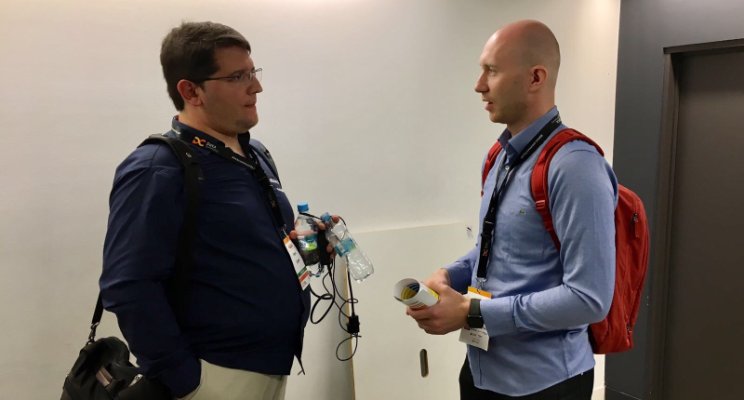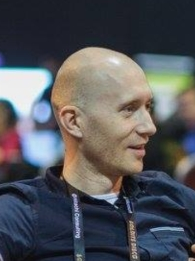SQLDay conference

Kaizen, or continuous improvement, requires moving beyond your comfort zone and continuously pushing yourself onwards. Although the momentum of this initiative is often difficult to sustain, this simple training method has helped me in so many ways. I’ve used it to prepare for triathlons and I have also been using it with great success in my professional life. Continuous improvement as a Data Engineer requires being open to new ideas, accepting new challenges, and exploring new prospects. On top of that, it also calls for collaborating with specialists as a way of saving precious time.
This is why I make the most of every conference opportunity, because I can expect all these elements to found in one location. This year, for the first time, I decided to attend SQLDay, which took place in Wrocław, Poland. This is a three-day conference organized by the Polish data community in the middle of May each year. The facts about this ninth occurrence of the conference speak for themselves: over 800 attendees, six parallel tracks (including the recently added Applied Data Science track), over 60 sessions, and an amazing line-up featuring Greg Low, Chris Webb, Brent Ozar, John Martin, and Pedro Lopes, to name but a few of the world-class experts in attendance. Below, in no particular order, I’ve listed my top Kaizen moments in conversation with leading experts on the latest developments in the industry.
1. Data Vault 2.0
It’s been ages since I tried an original Data Vault pattern. I remember having a long discussion with Thomas Kejser (for those unfamiliar with Kejser, he broke the world ETL record) about its disadvantages and how to address them during one of the SqlBits conferences. When I saw there was a session on version 2.0 at SQLDay, I marked it as a must-see. But earlier on in the event an opportunity to talk to expert Roman Czarko came up. Initially, I was looking for few pieces of information to build a mental model, and Roman explained the architectural changes flawlessly, so I could start digging into implementation challenges. I must say the automation potential is great, and I’m looking forward to testing it in my next greenfield project.
2. Query Store and Database Experimentation Assistant 2.0
Query Store doesn’t fully support readable replicas (AlwaysOn, Azure-Geo), ALTER DATABASE SCOPED CONFIGURATION FOR SECONDARY is in most cases too heavy (all secondaries affected, database scope), and TF9481 can be tricky to apply. I introduced myself to Pedro Lopes and asked him to shed some light on coming changes in that area, taking into account that the Sql Server 2017 increases the number of readable replicas to seventeen and also allows daisy chaining. His response offered nothing concrete, except that the Sql Server Tiger Team is aware of this limitation. Apparently, visibility and importance are too low, so the best approach is to upvote it on CONNECT, which is what I’ve implemented. I also got a few practical pieces of advice regarding Database Experimentation Assistant 2.0, which I’ve been looking into in preparation for my next migration.
3. Serverless Architecture
To my surprise, this was the answer Brent Ozar gave me when I asked what the most exciting thing he had learned recently was. Funnily enough, I’ve been working on a proof of concept that uses the Azure Bot Service built on top of Azure Functions and Logic Apps, so my knowledge of the topic was up to date. It’s worth mentioning general availability of Visual Studio for macOS.
4. Internet of Things
With an educational background in distributed intelligent sensor networks and an Azure Solutions Architect certificate under my belt, I found talking to Andre Melancia particularly engaging. After we exchanged some of our projects’ details we arrived at a reality check: market adoption and conversion rates from research into production. The good news is that things are looking better than ever, but Gartner’s “20 billion devices by 2020” might be a tough call—to reach that goal IoT would have to be in the mass market phase by now.
5. Work ethics, work culture, knowledge management
I hadn’t met Radowslaw Kepa or Wojciech Wencel before, and what started as small talk turned into an hour of swapping experiences and lessons learned and comparing various aspects of work culture in Poland and the UK. My decision to skip the next session to stay and talk to them about difficult areas like managing expectations and enabling employees was spot on. I gained so much from our discussion—I’d like to see a session or open panel discussion on these subjects at next year’s conference.
6. Sql Server on Linux
Another lucky encounter: one of the sessions I attended finished early and during lunch I was able to join Greg Low and John Martin. Great food fuelled a tour de force discussion that spanned InMemoryOLTP, changes in SSRS, DBCC commands, and even inheritance in PostgreSQL, but for me the most interesting part was about Sql Server on Linux. An example of some of the new feature that aren’t immediately obvious is that having mixed OS AlwaysOn nodes can provide additional protection against zero-day vulnerabilities.
Closing notes
If you were there, do share your own Kaizen moments in the comments section below because I’d love to hear them. I had wonderful time and I’d like to congratulate the organizers for producing a fantastic event that clearly required a huge amount of hard work and dedication. For anyone considering going there for the first time next year, in terms of return on investment, SQLDay represents the benchmark by which other conferences should be measured.
